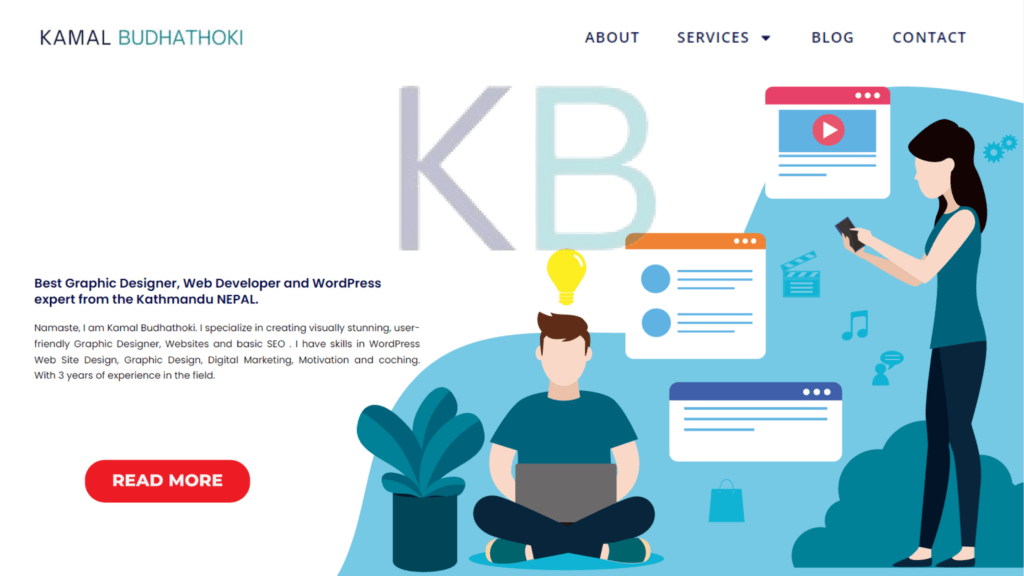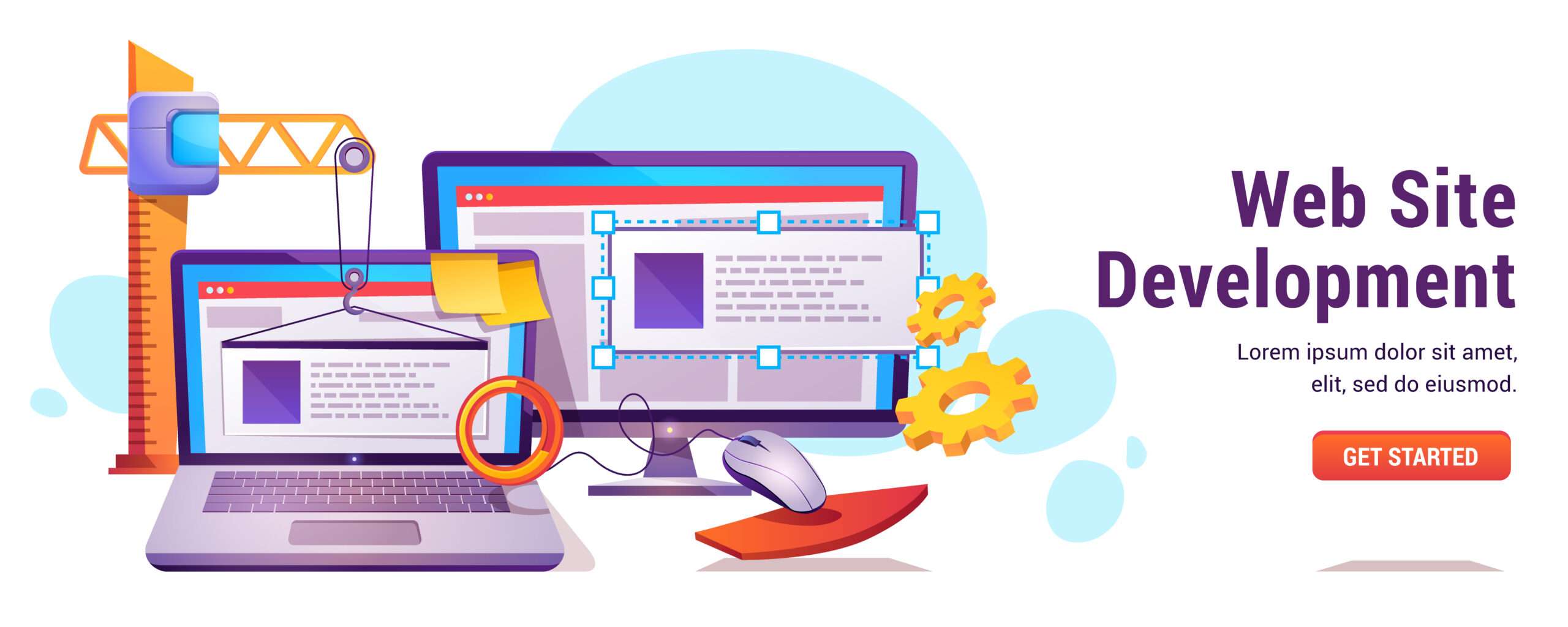Introduction
A compelling Call-to-Action (CTA) is an essential element in marketing and communication strategies, designed to prompt immediate response or engagement from the audience. A well-crafted CTA should be clear, concise, and action-oriented, guiding users toward a desired action such as subscribing, purchasing, or learning more. To create an effective CTA, it’s crucial to use strong, persuasive language, create a sense of urgency or value, and position the CTA strategically within content. Personalizing the message and offering something beneficial to the user can significantly improve conversion rates, making the CTA both impactful and result-driven.

Which of the following is not an example of active language you should use on a call-to-action?
In a human-centered approach (humane approach), the goal is to prioritize the needs and emotions of the users while encouraging them to take action. Examples of active language in a Call-to-Action (CTA) typically include direct, clear verbs like “Sign Up Now,” “Get Started,” or “Discover More.” These words encourage engagement.
- An example of language not considered active or aligned with the human-centered approach would be something vague or passive like:
“Think About It”
This phrase lacks urgency and does not encourage immediate action, making it less effective in a CTA.
In contrast, active language drives users to act instantly and gives them clear direction on what to do next.
True or false? you should only include a call-to-action on a blog post once the offer is launched.
False.
You should include a Call-to-Action (CTA) on a blog post even before the offer is officially launched. A CTA can be used to generate interest, gather leads, or build anticipation for an upcoming offer. This allows you to engage your audience early, keep them informed, and potentially build a list of interested individuals who can be notified when the offer is ready. It helps maintain momentum and creates opportunities for audience interaction throughout the entire process.
You can create a call-to-action to align with which stage of the buyer’s journey?
You can create a Call-to-Action (CTA) to align with any stage of the buyer’s journey. The buyer’s journey typically consists of three stages:
Awareness Stage: At this stage, potential buyers are identifying a problem or need. CTAs should focus on offering educational content, like “Learn More” or “Download Free Guide,” to help them understand the issue.
Consideration Stage: Here, buyers are exploring solutions. CTAs can encourage them to compare options, such as “Get a Demo” or “See Pricing,” helping them evaluate your product or service.
Decision Stage: Buyers are ready to make a purchase. CTAs should drive direct action, like “Buy Now” or “Start Free Trial,” encouraging them to choose your product or service.
Tailoring CTAs to these stages ensures they resonate with the buyer’s needs and motivations at each point of their journey.
Why should your call-to-action contain action-oriented language?
Your Call-to-Action (CTA) should contain action-oriented language because it directly encourages users to take specific, immediate steps, making it clear what they should do next. Action-oriented language uses strong verbs like “Get,” “Start,” “Join,” or “Subscribe,” which create a sense of urgency and motivation. This type of language eliminates ambiguity, grabs attention, and helps guide the audience toward your desired goal, whether it’s making a purchase, signing up, or engaging with your content. By being direct and action-focused, you increase the chances of conversions and drive meaningful user engagement.
Call-to-action overlays.
Call-to-action overlays are interactive elements that appear over a website, video, or other digital content, prompting users to take specific actions. These overlays can be pop-ups, banners, or buttons that contain persuasive messaging, encouraging actions like subscribing to a newsletter, downloading a resource, signing up for a webinar, or making a purchase.
Overlays are typically designed to capture attention without disrupting the user experience, often appearing at strategic moments such as when a user is about to leave the page or after they’ve engaged with content for a certain amount of time. Effective overlays use clear, action-oriented language and design elements that stand out, making it easy for users to take the desired action.
What are/is the area(s) you need to consider when building a call-to-action?
When building a Call-to-Action (CTA), several key areas need to be considered to ensure its effectiveness:
Language: Use clear, concise, and action-oriented language. Strong verbs like “Sign Up,” “Get Started,” or “Buy Now” create a sense of immediacy and guide the user toward a specific action.
Design: The CTA should stand out visually. Use contrasting colors, bold fonts, and appropriate sizing to ensure it catches the user’s attention without overwhelming the page.
Placement: Position the CTA in a strategic location, such as at the end of a blog post, in the middle of an article, or as a floating button. It should be easily accessible at the point when users are most likely to take action.
Value Proposition: Clearly communicate the benefit of taking the action. What will the user gain by clicking on the CTA? Offering value or an incentive (like a free trial or discount) increases the likelihood of engagement.
Timing: Consider when the CTA is shown to the user. Timed pop-ups, exit-intent overlays, or scroll-triggered CTAs can appear at key moments to prompt action.
Relevance: The CTA should align with the content and the user’s stage in the buyer’s journey. It needs to be relevant to their needs, whether they are just discovering your brand or ready to make a purchase.
By focusing on these areas, you can build a compelling and high-converting CTA.
Call-to-action examples pdf.
The Call-to-Action examples have been compiled into a PDF. You can download it using the link below:
Live-action how to train your dragon casting call.
The live-action How to Train Your Dragon movie is set to release on June 13, 2025. Directed by Dean DeBlois, who also directed the original animated trilogy, this adaptation is highly anticipated. The casting so far includes Mason Thames as Hiccup and Nico Parker as Astrid. Other actors like Gerard Butler, who reprises his role as Stoick, and Nick Frost as Gobber have also joined the cast. While most lead roles are filled, open casting calls for background roles and other characters may still be forthcoming (Wikipedia) (AllCasting).
For more details and updates on casting calls, stay tuned to major casting platforms or follow entertainment industry news closely!
Which of the following is not an example of active language you should use on a call-to-action?
In the context of Call-to-Action (CTA) language, passive or vague phrases are generally not considered effective examples of active language. For instance, phrases like “Think About It” or “You Might Want to Consider” do not prompt immediate action and lack urgency.
Active language, on the other hand, includes strong verbs that create a sense of urgency and direction, such as “Buy Now,” “Get Started,” or “Subscribe Today.” Using active language helps to engage the audience and clearly communicates the desired action, which is crucial for effective CTAs.
For further reading on crafting effective CTAs, you can explore resources from HubSpot and OptinMonster, which discuss the importance of active language and provide additional examples of CTAs.
You can create a call-to-action to align with which stage of the buyer’s journey?
You can create a Call-to-Action (CTA) to align with all three stages of the buyer’s journey, which typically includes:
Awareness Stage: In this initial stage, potential buyers are identifying a problem or need. CTAs in this phase might encourage users to access educational content, such as “Download Our Free eBook” or “Learn More About [Topic].” The goal is to provide valuable information that addresses their needs.
Consideration Stage: At this stage, buyers are actively comparing solutions. Effective CTAs here could include phrases like “Get a Free Demo,” “Compare Plans,” or “See Our Customer Testimonials.” These CTAs aim to help potential customers evaluate their options and consider your product or service as a viable solution.
Decision Stage: In the final stage, buyers are ready to make a purchase. CTAs should be direct and action-oriented, such as “Buy Now,” “Start Your Free Trial,” or “Claim Your Discount.” These prompts encourage immediate action and make it easy for users to finalize their decision.
By tailoring CTAs to each stage of the buyer’s journey, you can effectively guide potential customers toward conversion, enhancing their experience and increasing your chances of success. For more insights on crafting effective CTAs, you can check resources from HubSpot and OptinMonster.
- HubSpot on CTAs
- OptinMonster on the Buyer’s Journey
Why should your call-to-action contain action-oriented language?
Your Call-to-Action (CTA) should contain action-oriented language because it directly prompts users to take specific, immediate actions. This type of language fosters a sense of urgency and motivation, making it clear what you want your audience to do. Here are several reasons why action-oriented language is essential:
Clarity and Direction: Action-oriented language eliminates ambiguity. Phrases like “Sign Up Now” or “Get Started Today” provide clear instructions, guiding users on the next steps they should take. This clarity can significantly improve conversion rates (Dexerto) (AllCasting).
Increased Engagement: Using strong verbs creates excitement and encourages users to interact with your content. When CTAs resonate emotionally and suggest immediate benefits, users are more likely to engage (Wikipedia) (AllCasting).
Sense of Urgency: Action-oriented language can instill a sense of urgency. Words like “Now” or “Today” can prompt users to act quickly, reducing the likelihood of procrastination (Dexerto).
Improved Conversion Rates: Research shows that action-oriented CTAs can lead to higher conversion rates. A compelling CTA that uses active language can make a significant difference in turning potential customers into actual customers (AllCasting) (Dexerto).
Alignment with User Intent: CTAs that use action-oriented language align better with users’ desires and motivations, especially as they progress through the buyer’s journey. They create a connection between the user’s needs and the solutions you provide (Dexerto) (AllCasting).
In summary, incorporating action-oriented language in your CTAs not only enhances clarity and engagement but also drives conversions by motivating users to take the desired action. For more insights on crafting effective CTAs, you can explore resources from HubSpot and OptinMonster:
- HubSpot on CTAs
- OptinMonster on CTAs
What are/is the area(s) you need to consider when building a call-to-action?
When building a Call-to-Action (CTA), there are several key areas to consider to ensure effectiveness:
Language: Use clear and action-oriented language that prompts immediate action. Strong verbs like “Subscribe,” “Download,” or “Get Started” create a sense of urgency and guide the user on what to do next (Dexerto) (AllCasting).
Design: The visual design of your CTA is crucial. It should be eye-catching and distinct from other elements on the page. Use contrasting colors, appropriate font sizes, and adequate spacing to draw attention (Wikipedia) (AllCasting).
Placement: Positioning your CTA strategically on the webpage is essential. It should be placed where it naturally fits within the flow of content, such as at the end of a blog post, in the middle of an article, or as a pop-up when a user is about to leave (Dexerto) (Wikipedia).
Value Proposition: Clearly communicate the benefits of taking action. What will the user gain by clicking? Highlighting value (like a discount or free resource) can significantly increase engagement (AllCasting) (Dexerto).
Relevance: The CTA must be relevant to the content it accompanies and aligned with the user’s intent. Ensure it speaks to the specific audience segment you’re targeting and addresses their needs (Wikipedia) (AllCasting).
A/B Testing: Consider conducting A/B tests on different CTA variations to see which performs best. Testing different language, designs, and placements can provide valuable insights into what resonates most with your audience (Dexerto).
By focusing on these areas, you can create a compelling and effective Call-to-Action that engages users and drives conversions. For further details, you can check out resources from HubSpot and OptinMonster:
- HubSpot on Effective CTAs
- OptinMonster’s Guide to CTAs
What purpose does a call-to-action serve in a short-form video?
A Call-to-Action (CTA) in a short-form video serves several important purposes:
Encourages Engagement: CTAs prompt viewers to take immediate actions, such as liking, sharing, subscribing, or commenting. This engagement is crucial for increasing the video’s visibility and reach on platforms like YouTube, Instagram, and TikTok (Dexerto) (Wikipedia).
Guides Viewer Behavior: By providing clear instructions, CTAs help guide viewers on what to do next. For example, phrases like “Check out the link in the bio” or “Watch the full video on our channel” direct viewers to additional content or resources (AllCasting) (Dexerto).
Increases Conversions: In marketing-focused videos, CTAs are essential for driving conversions. They can prompt viewers to visit a website, make a purchase, or sign up for a newsletter, turning casual viewers into potential customers (Wikipedia) (Dexerto).
Enhances Branding: Consistent use of CTAs helps reinforce branding by maintaining a cohesive message across videos. This can increase brand recall and recognition among viewers (AllCasting) (Dexerto).
Creates a Sense of Urgency: Effective CTAs can instill a sense of urgency, encouraging viewers to act quickly. Phrases like “Limited time offer” or “Join now before it’s too late!” can prompt immediate action (Wikipedia) (AllCasting).
Overall, a well-placed CTA in a short-form video can significantly enhance viewer interaction, drive desired actions, and improve the overall effectiveness of the content. For more insights on creating effective CTAs in video content, you can explore resources from HubSpot and OptinMonster:
In conclusion,
Creating a compelling Call-to-Action (CTA) is essential for guiding your audience toward the desired actions that drive engagement and conversions. To craft an effective CTA, focus on using clear, action-oriented language that resonates with your target audience. Ensure that the design of the CTA stands out while remaining consistent with your brand’s identity.
Positioning the CTA strategically within your content and emphasizing the value proposition can enhance its effectiveness. It’s also crucial to tailor CTAs to different stages of the buyer’s journey, ensuring they align with user intent. Regularly testing and optimizing your CTAs can provide insights into what works best, ultimately improving performance.
By following these guidelines, you can develop CTAs that not only engage your audience but also lead to increased conversions and enhanced brand loyalty. For further reading on effective CTAs, consider exploring resources from HubSpot and OptinMonster, which offer valuable insights into crafting compelling calls-to-action:






